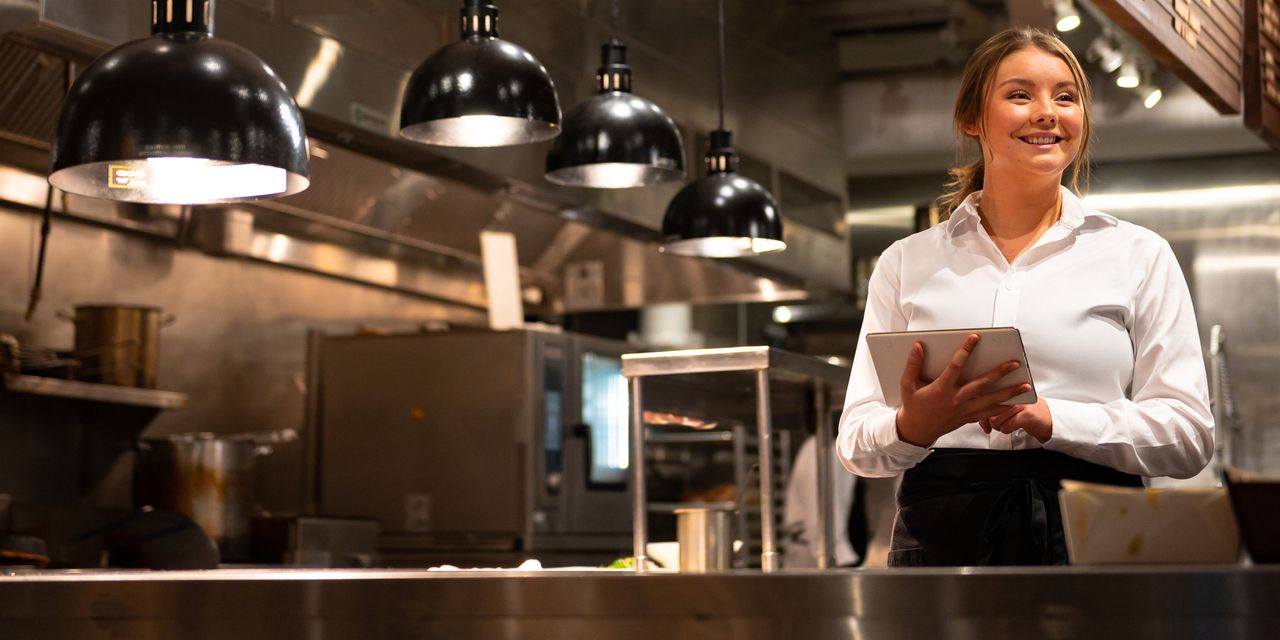Consumers aren’t the only ones getting used to the digital tipping screens that are becoming increasingly popular for in-person purchases. Behind the scenes, striking the right balance with preset tipping options is a delicate process for small-business owners. Set them too high and you could upset some customers. Too low, and you could be leaving money on the table.
The right tipping system helps encourage customers to tip generously and provides a smooth experience for people on both sides of the transaction. Small-business owners can use their point-of-sale systems’ customer-facing screens to collect other useful feedback, too.
Here’s how restaurant-industry experts are navigating new gratuity norms and getting the most out of customer-facing tipping screens.
Consider your business model
If you’re not sure where to start with preset tipping options, take your business model into account. “You have to be specific and intentional when you’re choosing what you want those percents to be,” says Sarah White, who runs multiple restaurants in Northern Virginia and is president of the Virginia Restaurant, Lodging and Travel Association’s restaurant component.
Businesses that do mostly takeout orders may choose lower tipping options since less service is required. For example, White usually chooses gratuity options of 5%, 10% and 15% for carryout orders. Full-service restaurants or professional service businesses, like a spa, on the other hand, might choose 20% and above.
Julia Kesler Imerman’s Atlanta cafe, Daily Chew, operates according to a hybrid model, meaning people order at the counter, pay upfront and then receive table service afterward. To account for this service and the fact that 10% of tips go to the kitchen, she and her staff decided gratuity presets should start at 18%, with additional options at 20% and 25%.
See: I’m sick and tired of tipping 20% every time I eat out. Is it ever OK to tip less? Or am I a cheapskate?
Do market research
Getting to know your neighborhood and customer base can go a long way if you’re not sure how to best set up your business’s tipping screen. Pay attention to how similar businesses in your area approach tipping and consider asking regular customers for their opinions on which tip amounts feel appropriate.
Your market research might also involve looking at tipping data for your area because what works in one city might not work in another. For example, Toast, a restaurant POS system provider, found the average tip percentage among quick- and full-service restaurants across 12 metro areas was highest in Cleveland at 20.6% and lowest in San Francisco at 17%.
Your front-of-house employees can be a valuable resource, too. While you’re experimenting with the default tipping options, ask employees which options stick. “If you set one and you see that tips aren’t what you want them to be, try adjusting it a little higher or a little lower,” White says.
Related: ‘All of these tips add up’: If a restaurant adds a 20% tip, am I obliged to pay? Should tipping not be optional?
Think twice before removing the custom tip option
In addition to fixed tip percentages, most tipping screens allow for a “custom tip” option where the customer can input a dollar amount of their choosing. While this feature may mean customers tip a smaller-than-suggested amount, taking away the custom tip option doesn’t necessarily mean they’ll choose a preset one instead. When Kesler Imerman removed the option, she noticed that people who might’ve otherwise left a custom tip were choosing not to tip at all. Eventually, she added the custom option back to the tipping screen.
Separately, White points out that some people prefer leaving tips in whole dollar amounts as opposed to dollars and cents. The custom option lets them do this.
Remember that tipping doesn’t have to be awkward
Tipping screens have certainly sparked some friction by prompting people to rethink how much they tip and where. But customers might be warming up to them. The payment processor Square reports that in the fourth quarter of 2022, full-service restaurants using its system saw a 16.50% increase in tips year over year, while quick-service restaurants saw a 15.86% increase.
As Kesler Imerman puts it, the preset options are there to guide customers. Similarly, White likens the options to a reminder. Plus, it takes pressure off employees to expressly ask for tips, White says.
Collect data points on tipping and beyond
Using a POS system to collect tips isn’t only a matter of convenience — having data on how much employees are tipped during their shifts gives you better insight into your business, too.
“There’s so much power in tracking all of that data to be able to understand, OK, this is how much an employee will typically make every night that they work, so we can plan to staff accordingly,” says Dani Zuchovicki, membership and community manager at The Hatchery, a nonprofit food and beverage incubator in Chicago.
Tipping data aside, some POS systems prompt customers to select “thumbs up” or “thumbs down” after tipping, along with a reason why. White gets notifications immediately after a customer completes this workflow and uses it to parse out, for example, who should be eligible for a management role or who might work better behind the bar as opposed to on the floor. This can lead to both higher employee satisfaction and a more efficient business.
More From NerdWallet
Hillary Crawford writes for NerdWallet. Email: [email protected].
Read the full article here




